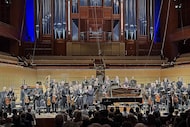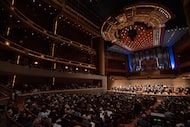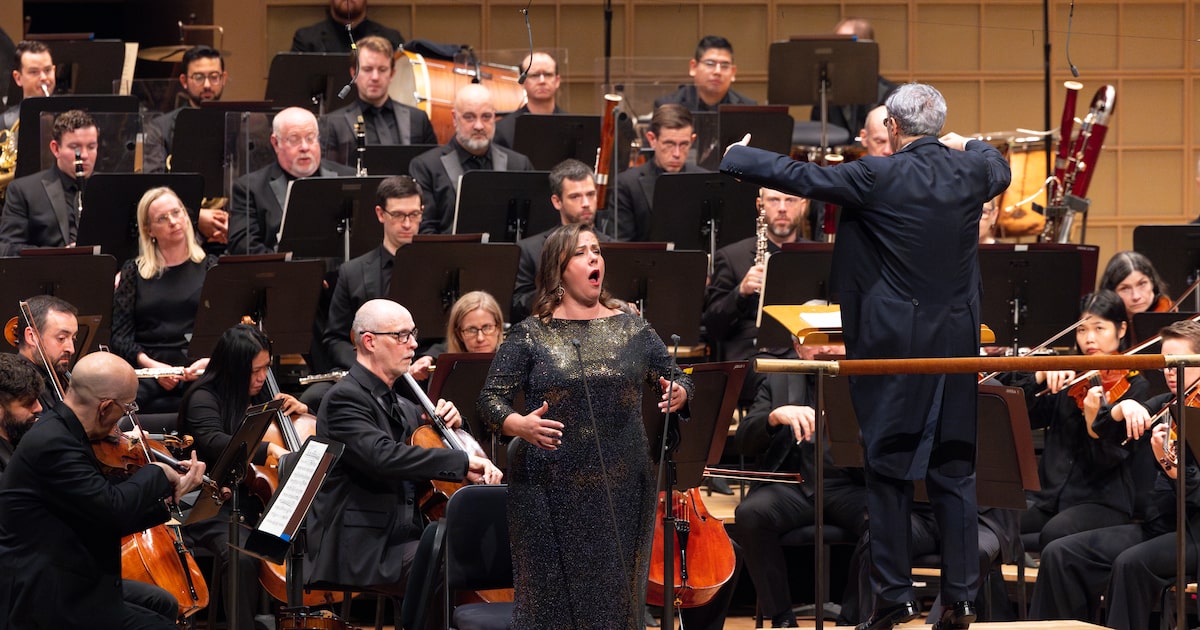There were many lovely moments in the Dallas Symphony Orchestra’s concert Thursday night. With music director Fabio Luisi back on the podium, quieter music in both the Haydn Oxford Symphony (No. 92) and Mahler Fourth was lovingly tapered in time and dynamics. And there were exciting moments in the Mahler. But there were issues.
In Mahler, you may say nothing succeeds like excess. Well, up to a point. For all the symphonies’ contrasts of tempo, volume and color, performances of the movements need overarching logic, and a care with proportions, that I missed in Thursday’s Fourth.
The way Luisi eased into the first movement’s main theme was sheer magic, setting high expectations for what was to follow. The third movement exquisitely worked its way up from hushed lower strings.
But balances were occasionally sacrificed to making points. Individual sections of the orchestra — horns, flutes and clarinets particularly — were sometimes thrust too prominently into sonic spotlights. Concertmaster Alexander Kerr’s excellent solos were sometimes swamped by sounds too loud elsewhere — and coordination sometimes slipped.
News Roundups
In the finale, singing words from a collection of German folk poetry, soprano Sofia Fomina creditably delivered a child’s fanciful imaginings of heaven. But the orchestra sometimes overwhelmed her lower notes.
I wanted to love this performance, I really did, and it got a roaring ovation at the end. But it seemed more about trees than the forest.
 Review: Dallas Symphony opens with Barber, Beethoven and John Adams’ ‘Harmonielehre’
Review: Dallas Symphony opens with Barber, Beethoven and John Adams’ ‘Harmonielehre’
Guest conductor David Robertson led the concert, with pianist Emanuel Ax in the Beethoven.
 Dallas Symphony changes drinks policy for classical concerts
Dallas Symphony changes drinks policy for classical concerts
The orchestra announced the change in a quippy Instagram video this week. “No more ‘where are my glasses?’ moments!” the caption read.
Haydn’s Oxford Symphony, so nicknamed for a performance the composer conducted when he received an Oxford University doctorate, has a relatively modest instrumentation. It would have been conceived for and originally performed by what we’d consider chamber orchestras.
It seemed a pity not to contrast the big orchestra for the Mahler with a much smaller complement in the Haydn, but here the strings were only slightly reduced. And this of all music could have benefitted from a less sumptuous acoustic, which could have been provided by closing off supplementary reverberance chambers behind grilles ringing the Meyerson Symphony Center’s top level.
The late Morton Meyerson regretted that the DSO virtually never took advantage of the hall’s adjustable acoustics, although a lot of the motors controlling the chamber doors have been allowed to burn out.
Tempos were smartly chosen in the first, second and fourth movements, with much made of the music’s imagination and wit — and drama. (Symphonies originally grew out of opera overtures.)
But more extrovert passages got too big and burly for the music at hand, and evidence strongly suggests late minuets like the third movement were meant to go at a brisk one beat per measure, not Luisi’s moderate three. As René Spencer Saller’s program note said, this is a scherzo in all but name.
With a supertitle screen for projecting text translations in the Mahler, it also projected movement designations in both symphonies. This might be an idea worth pursuing.
Details
Repeats at 2 p.m. Sunday (no Friday or Saturday repeats) at Meyerson Symphony Center, 2301 Flora St. $37 to $170. 214-849-4376, dallassymphony.org.
